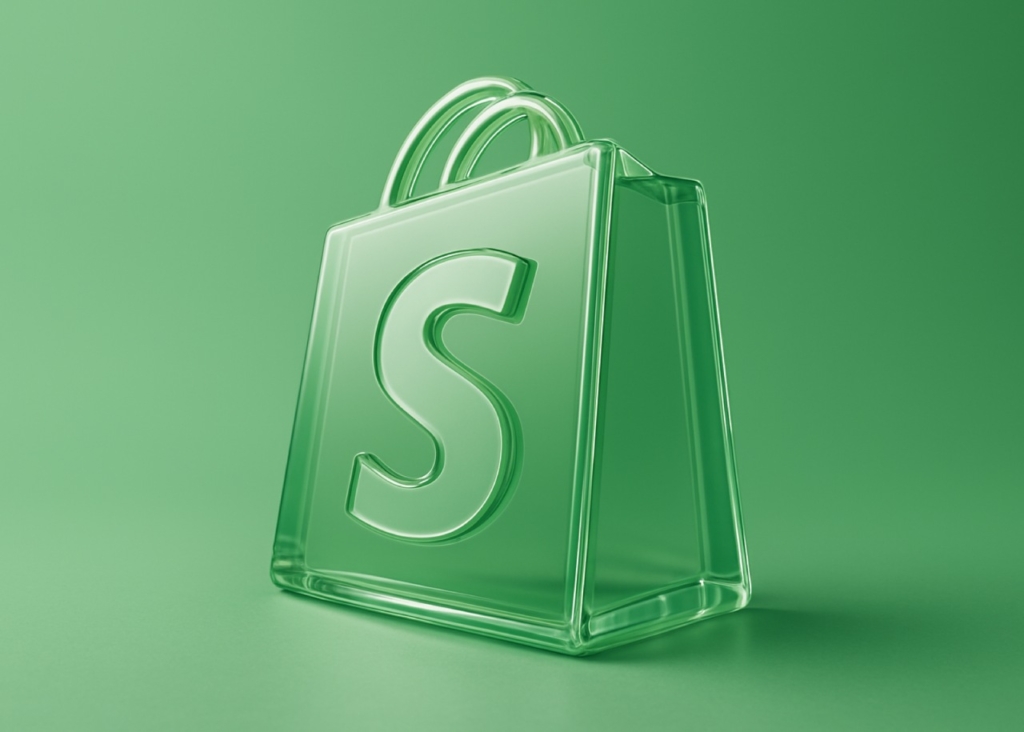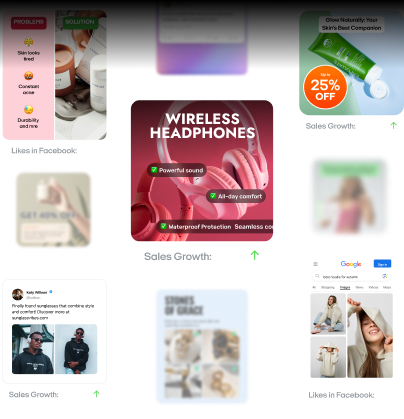20 targeted mobile advertising examples: Learn how to use it in your business campaigns
Explore 20 smart mobile ad tactics you can use today. From geo-targeted offers to behavior-based campaigns, see what works, and how Zeely AI makes building and scaling mobile ads effortless.
Targeted mobile advertising means showing the right ad to the right person on their phone, based on who they are, where they are, or what they’ve recently done. It turns broad campaigns into precise, measurable moments that drive real action, especially important now, since global advertising revenue is only projected to grow by about 6 % in 2025, according to Reuters.
In this guide you’ll explore 20 examples that show exactly how it works: each one comes with the ad format, the targeting idea, and the metric to watch, so you can connect what you do with what you measure.
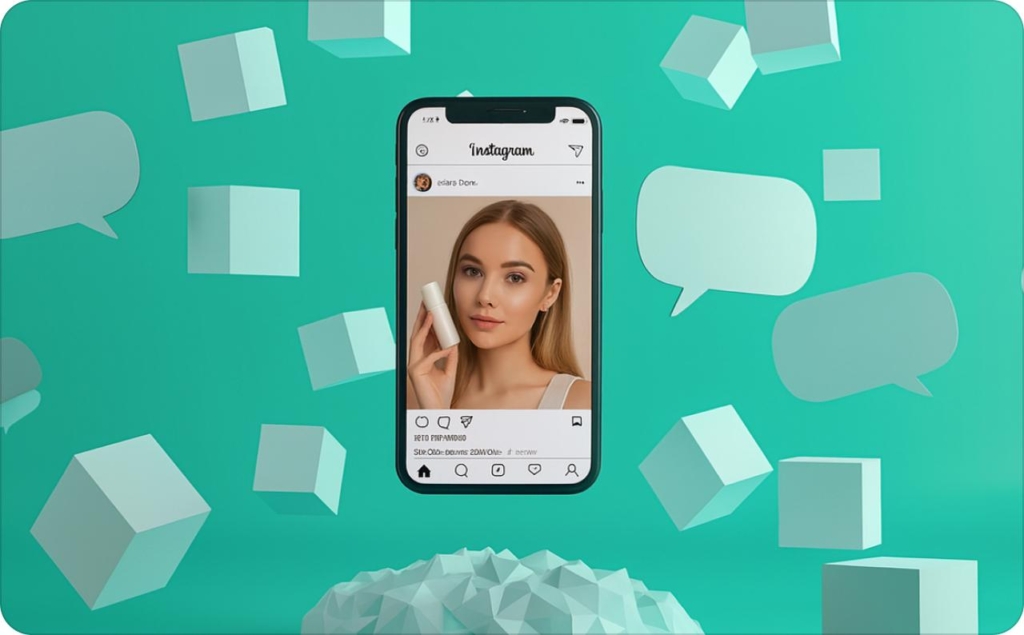
What targeted mobile advertising means
When an ad appears at just the right moment, that’s targeted advertising done well. On mobile, it starts with signals such as what someone is doing, where they are, what device they’re using, and their session state like scrolling, watching, or playing. Add first-party data including past visits, actions, and intent, and those signals shape what shows up next.
It’s not guesswork; it’s pattern matching in motion. A short video ad can meet someone mid scroll. A map-based ad can appear when they’re nearby. A timely retargeting offer can reach someone ready to buy again. When signals guide format and timing, ads stop interrupting and start helping.
According to HubSpot, 94 % of marketers say offering a personalized experience impacts their company’s sales.
That is the quiet power of modern mobile advertising targeting capabilities, where clarity, context, and timing work together.
Mobile ad formats at a glance
Each format in mobile advertising targeting serves a different purpose depending on where and how users engage. With mobile in-app purchase revenue reaching $150 billion in 2024, the importance of aligning format and signal has never been clearer.
| Format | Best for | Targeting angle | Creative notes | Metric to watch |
| Native ads | Seamless in-feed engagement | Context and behavior | Match app look & feel; clear but subtle CTA | Click-through rate |
| Interstitial ads | Full-screen impact moments | Session breaks | Use short motion; include close option | Conversion rate |
| Rewarded video | Gaming and entertainment apps | User opt-in | Offer value exchange; keep under 30 seconds | Completion rate |
| Rich media ads | Interactive storytelling | Device and engagement level | Use gestures or motion; light load | Interaction rate |
| In-app messages | Existing users or upsell moments | First-party data | Personal tone; action-driven button | Tap-to-action rate |
| Push / SMS | Re-engagement and reminders | Location and recency | Keep copy under 90 characters; vivid action | Open or response rate |
| AR ads | Immersive product demos | Camera and device signals | Motion should feel intuitive; highlight product use | Engagement duration |
Geo-targeted mobile advertising
Mobile geo targeting advertising uses a person’s real-world location to decide when and where to show an ad. It can be set up through geo-fencing, which builds a tight virtual boundary around a store or event; a radius, which covers a wider circular area around a location; or place categories, which target types of venues such as gyms, cafés, or car dealerships. Each approach helps reach users when intent and proximity align, whether they are nearby, recently visited, or often frequent a specific type of place.
| Use case | Targeting method | Expected KPI | Guardrail |
| Store visit boost | Geo-fence | Click-to-direction rate | Avoid overlap with nearby competitors |
| Event promotion | Radius | Footfall lift | Limit duration to event period |
| Restaurant or gym offers | Place category | Conversion or coupon redemption | Use verified data sources only |
Well-set geo targeted mobile advertising doesn’t just push messages. It times them perfectly by showing the right offer to the right person in the right place, without feeling invasive or off-timing.
20 targeted mobile advertising examples
The best mobile targeted advertising doesn’t shout. It finds people in the right moment and quietly fits in. Mobile now drives over 65 % of global digital ad spend, which means precision matters more than volume. The examples below show how smart targeting feels natural, not forced. Each card breaks down what made it work — the format, the targeting idea, and the metric worth watching, plus a quick test you can try yourself.
1. BlueBottle Coffee commuter route loyalty ad
This tactic uses mobile geo targeting advertising tied to repeat travel patterns. BlueBottle Coffee identified frequent commuters passing its downtown cafés and delivered loyalty offers during peak morning hours, encouraging users to pre-order through the app.
Why it works
- Targets consistent daily behavior instead of one-time visits
- Reinforces habit by rewarding repeat proximity
- Uses time and motion data to create natural rhythm-based engagement
- Increases morning order volume with minimal creative spend
How to use it in your advertising: Imagine a commuter walking the same route every weekday. As they pass a BlueBottle location, a quiet message appears: “Skip the line, your cappuccino’s waiting.” Set up location triggers around consistent commuter corridors, limit frequency to avoid fatigue, and track redemption or order-ahead rates to measure routine-based retention.

Photo source: Blue Bottle Coffee
2. Everlane proximity-based pop-up ad
This tactic uses mobile geo targeting advertising to promote temporary pop-up stores and local events. Everlane identified users within a short radius of new pop-up locations and served them ads with store details and exclusive early-access offers.
Why it works
- Creates urgency through limited-time, location-specific access
- Connects brand curiosity to real-world presence
- Builds awareness in new markets with minimal spend
- Converts nearby discovery into foot traffic and social buzz
How to use it in your advertising: Imagine a shopper walking through a busy weekend market and seeing a soft prompt: “Everlane Pop-Up, two blocks away. First look today.” Use a small radius around temporary retail spaces, limit frequency to a few impressions per day, and pair the message with visual cues like maps or countdowns to spark immediate visits.
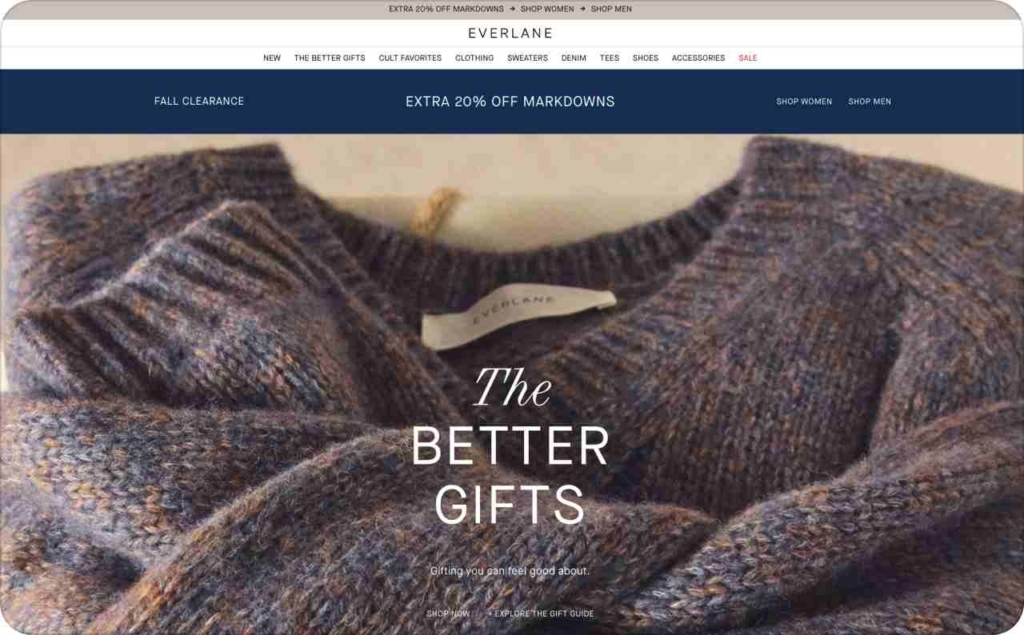
Photo source: Everlane
3. Thrive Market diet-based recipe ad
This tactic uses first-party data targeting within a mobile app to recommend products and recipes that match a user’s chosen diet, such as keto or gluten-free. The ad experience feels more like personalized content than a promotion, guiding users to shop directly from a curated recipe page.
Why it works
- Uses declared preferences, not assumptions, to personalize offers
- Blends education with commerce, which builds trust
- Encourages multi-item baskets through contextual pairing
- Increases repeat app visits by feeling helpful, not sales-driven
How to use it in your advertising: Picture a user browsing meal ideas in the Thrive Market app. They see a short feature: “Your 5-minute keto lunch kit is everything you need in one click.” Build segments based on self-reported dietary data or browsing patterns, and link each ad to a ready-to-buy product set. Keep copy conversational and framed around solving a real problem, like saving time or simplifying healthy eating.
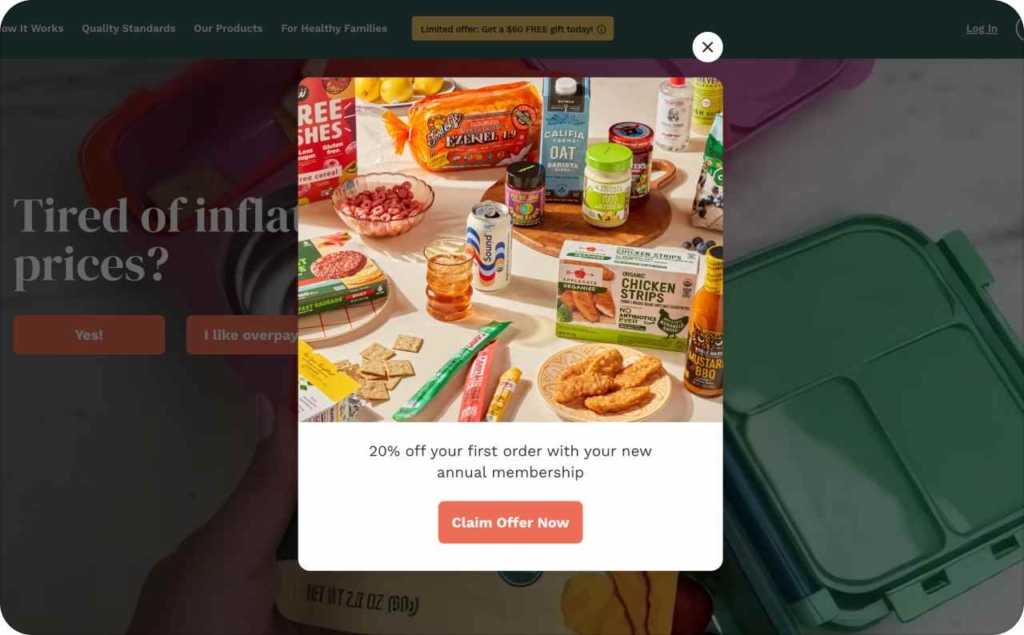
Photo source: Thrive Market
4. AllTrails location-aware weekend hike ad
This tactic uses geo targeted mobile advertising tied to outdoor behavior and local trail data. AllTrails promotes nearby hikes, premium map upgrades, or partner gear offers to users who open the app on Friday or Saturday within a certain radius of popular parks.
Why it works
- Meets users in the moment of planning, not after
- Uses time-of-week and location data to boost relevance
- Feels like a helpful nudge rather than an interruption
- Converts weekend intent into app engagement and paid upgrades
How to use it in your advertising: Imagine someone opening AllTrails on a Friday afternoon to check weather and routes. A short banner appears: “Trail weather looks perfect, upgrade for offline maps.” Schedule ads for pre-weekend windows, align offers with local conditions, and keep creative crisp and outdoorsy to feel like guidance, not marketing.
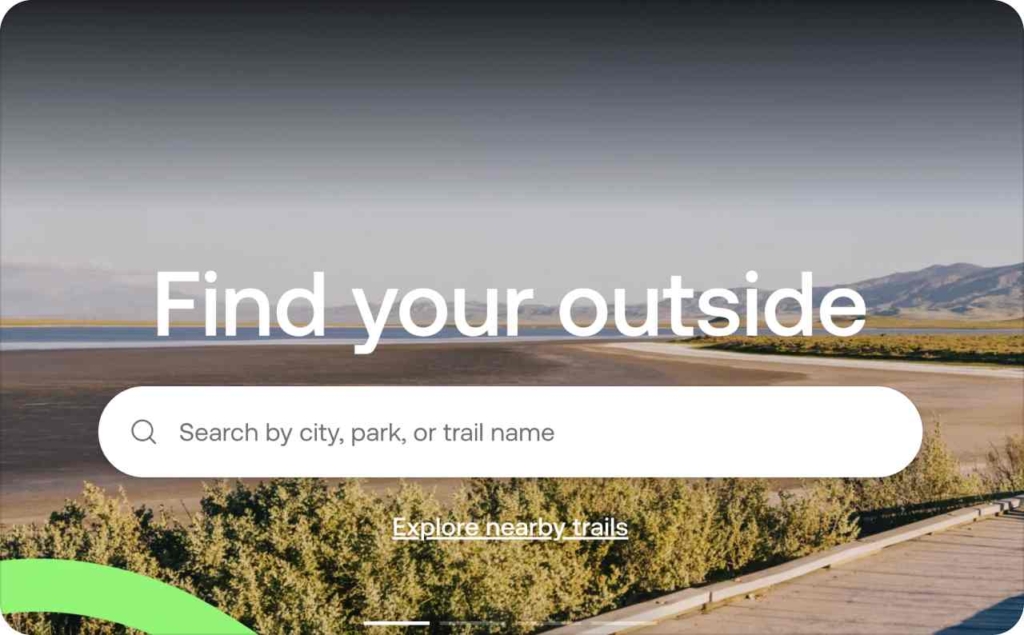
Photo source: AllTrails
5. Calm sleep-pattern retargeting ad
This tactic uses behavioral mobile advertising targeting based on app usage patterns. Calm identified users who opened the app late at night but didn’t complete a session, then served them soothing, sleep-focused ads the next evening to encourage consistency and subscription upgrades.
Why it works
- Uses timing and habit data to reconnect with real intent
- Turns an incomplete action into a personalized reminder
- Feels empathetic rather than promotional by focusing on user need
- Grows retention and paid conversion through gentle repetition
How to use it in your advertising: Picture a user who opened Calm last night but stopped mid-session. The next evening, they see a quiet ad in their feed: “Still awake? Your bedtime story’s waiting.” Use session data and time-based triggers to re-engage users when context matches their previous behavior. Keep copy calm, not commanding, and focus on continuity, helping people return to what already works for them.
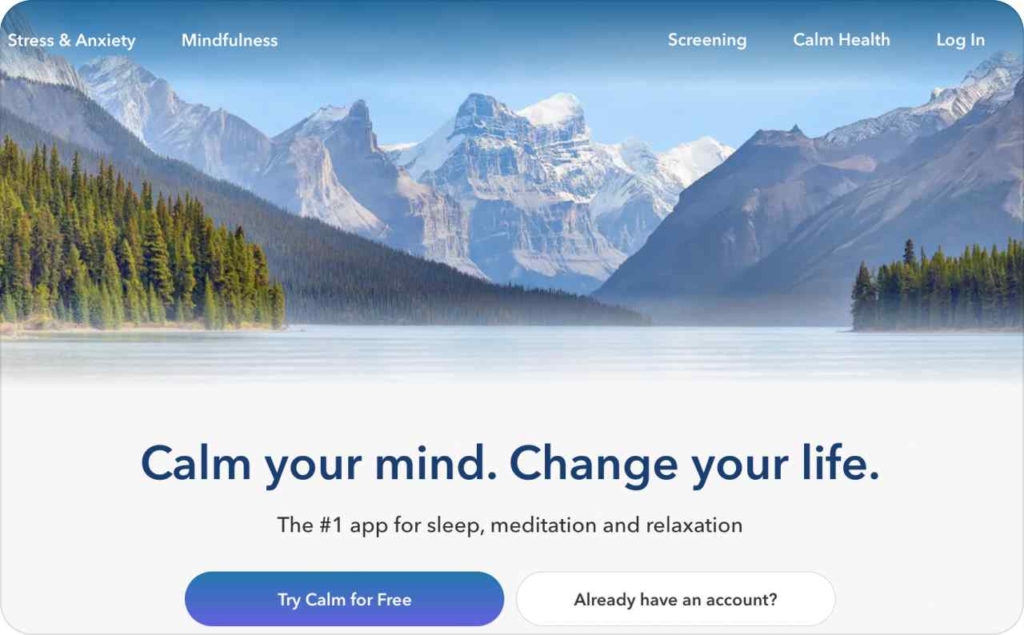
Photo source: Calm
6. ClassPass gym-check-in reminder ad
This tactic uses mobile retargeting advertising tied to user activity and physical location. ClassPass detects members who haven’t checked into a class recently and serves ads or notifications when they pass by partner gyms, inviting them to rebook or try a new workout nearby.
Why it works
- Combines behavioral data with real-world proximity
- Feels like a nudge rooted in personal routine, not pressure
- Re-engages dormant users with low acquisition cost
- Drives both app re-opens and partner studio attendance
How to use it in your advertising: Imagine a user walking near a ClassPass gym they once visited. A short, context-aware ad appears: “Back near Pulse Fitness? Your first class this week is free.” Use check-in history and live location data to personalize timing, limit frequency to once per zone, and measure lift in rebookings or app logins to track re-engagement success.
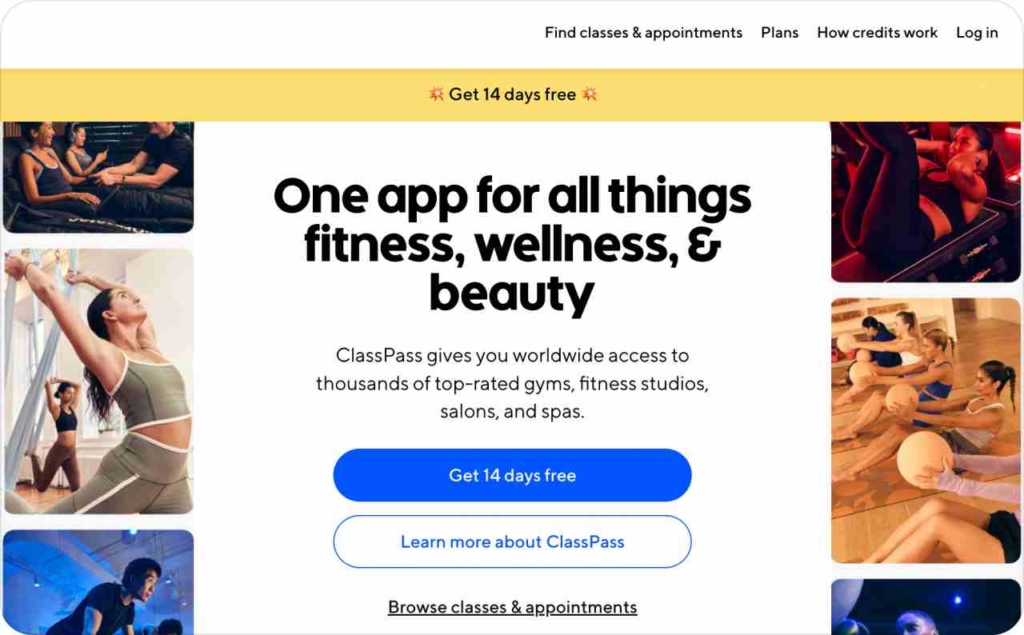
Photo source: ClassPass
7. Headspace mindful commute audio ad
This tactic uses contextual mobile advertising targeting based on time, motion, and app usage data. Headspace serves short audio or banner prompts during typical commuting hours, encouraging users to start a quick mindfulness session while on the move.
Why it works
- Matches the ad’s tone and content to a predictable daily window
- Turns idle travel time into a moment of value and calm
- Builds habit association by linking mindfulness to routine
- Increases engagement with low-friction, in-context prompts
How to use it in your advertising: Picture someone waiting for a bus at 8 a.m., scrolling through a podcast app. A soft message appears: “Take a breath before your day starts.” Use time-of-day signals, mobility data, and lightweight creative formats that blend into existing audio or feed environments. Keep tone gentle and human to make users feel seen, not sold to.
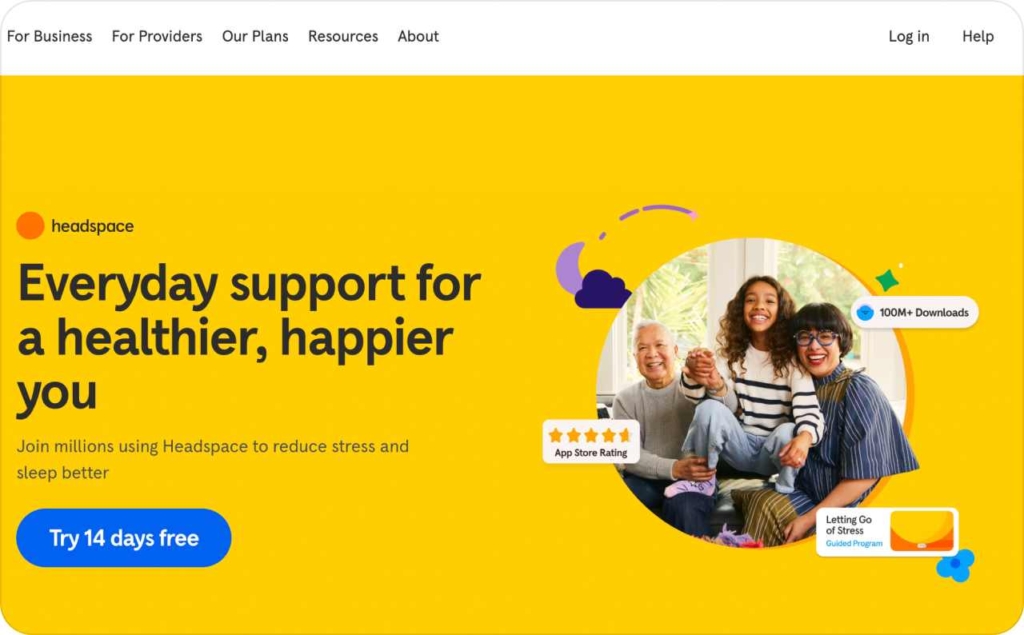
Photo source: Headspace
8. Duolingo streak-protection notification ad
This tactic uses first-party behavioral targeting within the app to keep learners engaged. Duolingo identifies users who are close to breaking their daily streak and triggers a mobile push or in-feed ad reminding them to complete a quick lesson before the day ends.
Why it works
- Leverages intrinsic motivation, users don’t want to lose progress
- Turns a retention problem into a playful challenge
- Uses urgency and gamification without feeling intrusive
- Drives consistent engagement that compounds long-term revenue
How to use it in your advertising: Picture a user who hasn’t opened Duolingo all day. At 8 p.m., they see a simple prompt: “Your streak’s in danger, one lesson saves it.” Use app usage data and local time triggers to personalize timing, pair friendly copy with visual streak cues, and track lesson completions or streak recovery rates to measure reactivation success.
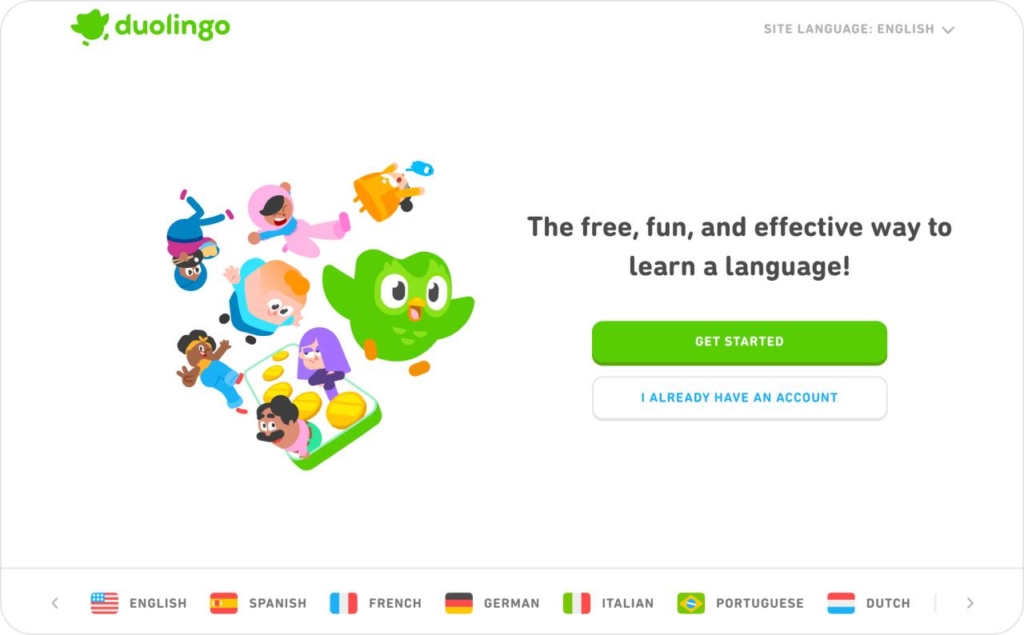
Photo source: Duolingo
9. Hopper last-minute flight price alert ad
This tactic uses mobile behavioral targeting linked to recent search history and location data. Hopper identifies users who searched flights but didn’t book, then delivers mobile ads highlighting sudden price drops or limited-seat deals for the same route.
Why it works
- Feeds on genuine travel intent rather than broad demographics
- Creates urgency through real-time pricing changes
- Feels like a helpful alert, not a sales pitch
- Converts high-intent users who simply needed a final nudge
How to use it in your advertising: Imagine a traveler who searched flights from Austin to Denver two days ago but didn’t buy. Today, they see a push message: “Your Denver flight just dropped $42, book before midnight.” Use recent browsing data, location, and price triggers to deliver highly specific, value-driven reminders. Keep messaging short, time-stamped, and focused on savings over scarcity.

Photo source: Hopper
10. Skillshare course-completion encouragement ad
This tactic uses mobile retargeting advertising based on learning progress and session data. Skillshare identifies users who started a class but haven’t finished and serves them a friendly reminder ad with a progress bar visual and a soft push to resume learning.
Why it works
- Builds on personal investment, users want to complete what they began
- Keeps engagement active without relying on discounts or urgency
- Reinforces value perception by celebrating progress, not absence
- Increases both completion rates and likelihood of subscription renewal
How to use it in your advertising: Picture a user who’s halfway through a photography course. The next day, they see an ad in their feed that reads: “You’re 60% there, finish your next lesson today.” Use in-app progress tracking and behavioral triggers to time the reminder naturally. Focus copy on encouragement and achievement rather than pressure, so it feels like support, not sales.
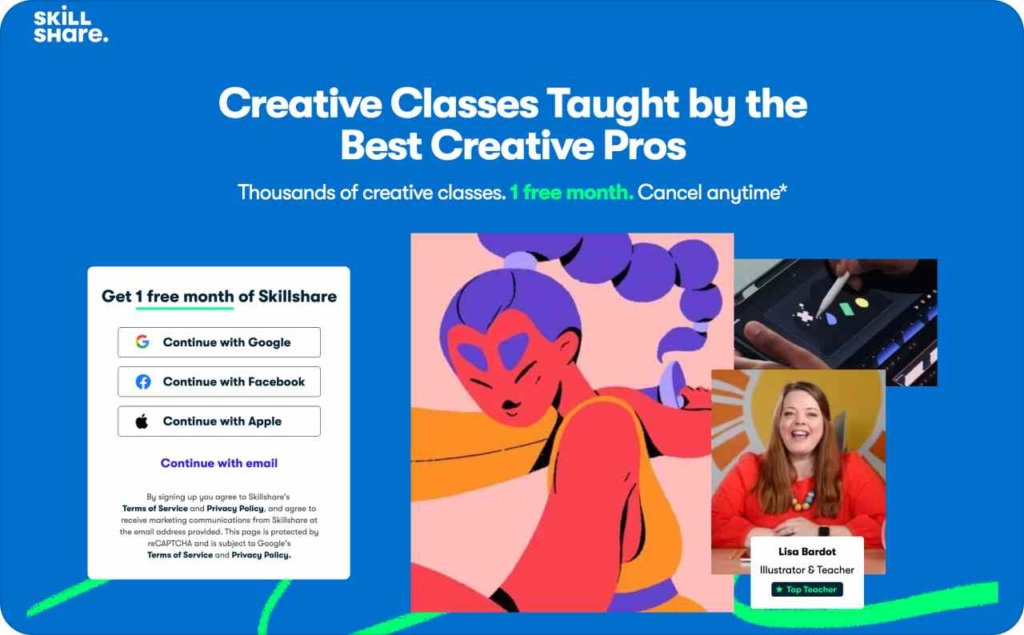
Photo source: Skillshare
11. Headway personalized book summary ad
This tactic uses interest-based mobile advertising targeting tied to reading history and topic preferences. Headway analyzes which book summaries users finish or save, then serves personalized ads suggesting new titles in similar categories such as productivity, finance, or self-growth.
Why it works
- Builds on proven engagement data instead of guesswork
- Feels like a thoughtful recommendation rather than an ad
- Extends session value by connecting learning streaks
- Drives both app opens and subscription upgrades
How to use it in your advertising: Imagine a user who just finished a summary of Atomic Habits. Later that day, they see an ad that reads: “Next up: The Power of Focus, 3 key lessons in 10 minutes.” Use in-app reading behavior, saved lists, and category tagging to serve natural next-step content. Keep tone conversational and discovery-focused so the ad feels like part of the reading journey, not a detour.
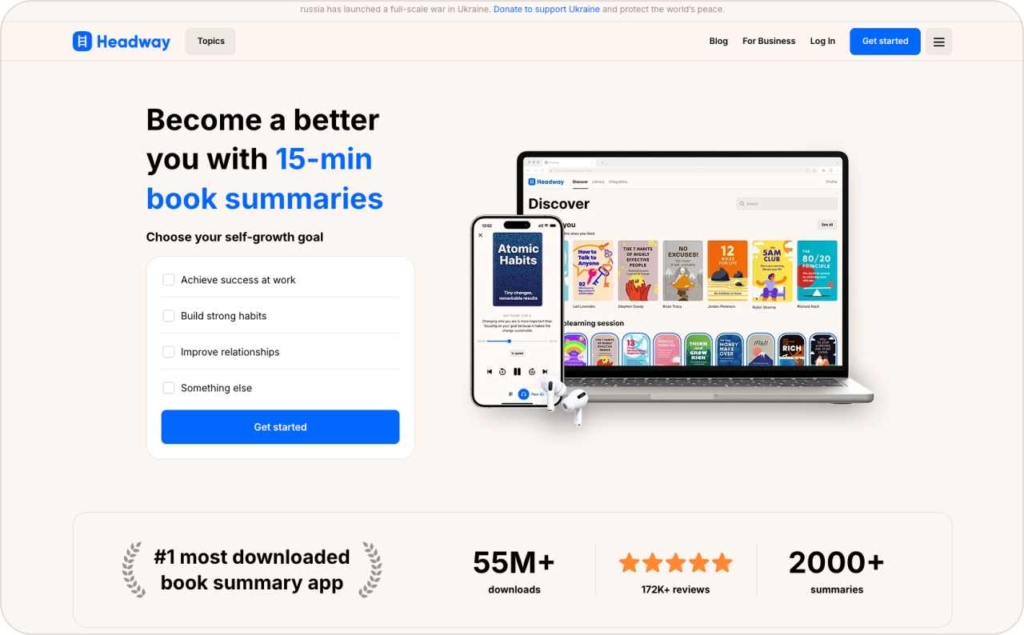
Photo source: Headway
12. Blinkist commuter-time audio summary ad
This tactic uses contextual mobile advertising targeting based on time of day and motion data. Blinkist promotes quick audio summaries to users identified as commuting, through accelerometer signals, navigation apps, or connected car data, positioning learning as a simple daily habit.
Why it works
- Aligns content length and format with commute duration
- Turns idle travel time into productive listening moments
- Strengthens brand association with everyday improvement
- Boosts completion rates by matching ads to real-world context
How to use it in your advertising: Picture someone stuck in morning traffic with Spotify open. A quiet Blinkist ad appears: “Turn your commute into three new ideas.” Use motion and time-based triggers to surface relevant content when users are traveling. Keep copy brief, rhythm-focused, and friendly, helping people see your product as a seamless part of their day, not an interruption.
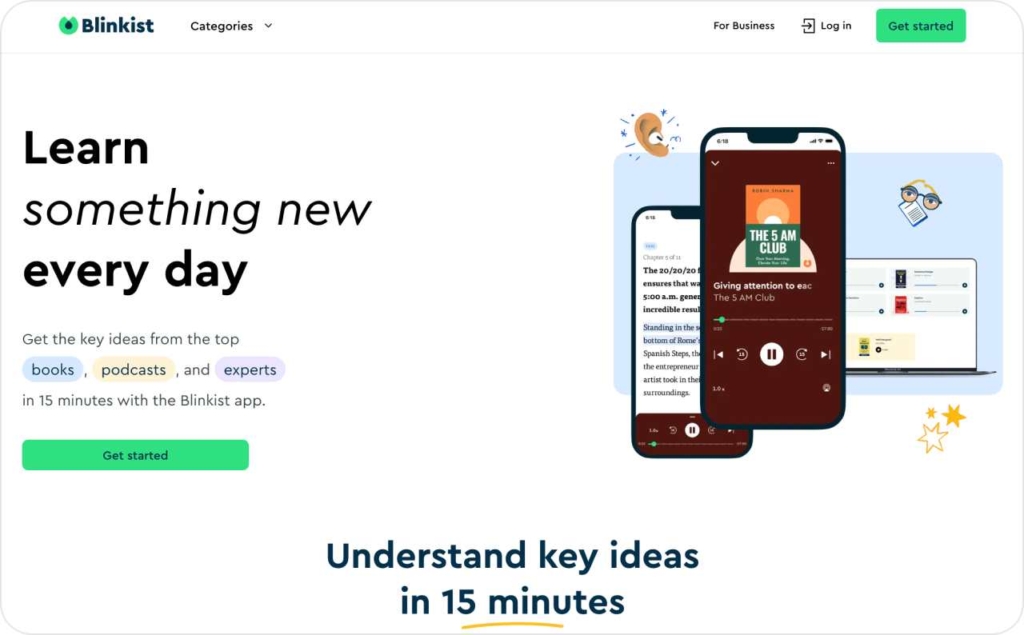
Photo source: Blinkist
13. Calmerry local therapist matching ad
This tactic uses geo targeted mobile advertising to connect users with licensed therapists available in their region. Calmerry identifies people searching for mental health support or stress-related content and serves them personalized mobile ads offering same-day online sessions with nearby professionals.
Why it works
- Combines intent signals with geographic proximity for faster conversion
- Builds trust by emphasizing accessibility and human connection
- Feels supportive rather than transactional during a sensitive search moment
- Converts high-intent users into paying clients through local relevance
How to use it in your advertising: Imagine someone scrolling late at night after searching “online therapy near me.” A Calmerry ad appears: “Talk to a licensed therapist today, sessions open in your area.” Use location, search intent, and time-of-day data to make the message feel timely and caring. Keep visuals calm, tone empathetic, and CTA gentle to maintain credibility and comfort.
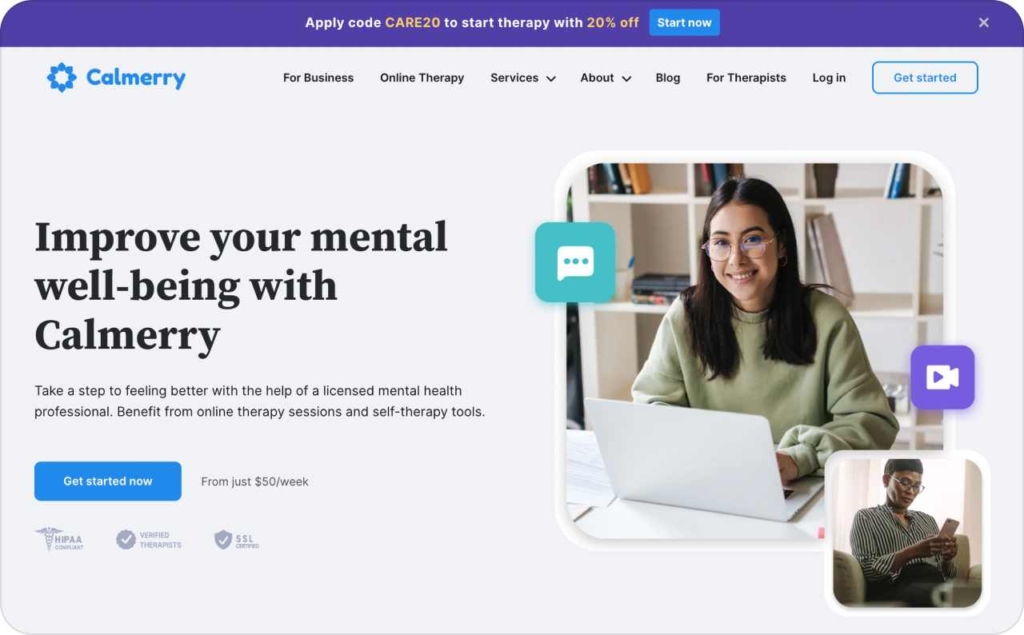
Photo source: Calmerry
14. Too Good To Go surplus alert ad
This tactic uses real-time mobile advertising targeting tied to inventory and location data. Too Good To Go sends push notifications and in-feed ads to users within a short distance of partner restaurants that have unsold meals, prompting them to reserve food before closing time.
Why it works
- Turns surplus inventory into instant, low-cost conversions
- Feeds off real-time data for urgency that feels natural
- Builds community goodwill by connecting savings and sustainability
- Encourages frequent app engagement through time-sensitive offers
How to use it in your advertising: Picture someone leaving the office at 6 p.m. A short ad pops up: “Fresh meals nearby, save before 7.” Use live inventory updates and narrow geo-fences around partner restaurants to trigger these alerts automatically. Keep copy concise and time-stamped, focusing on opportunity and benefit, not scarcity, to keep the tone helpful and human.
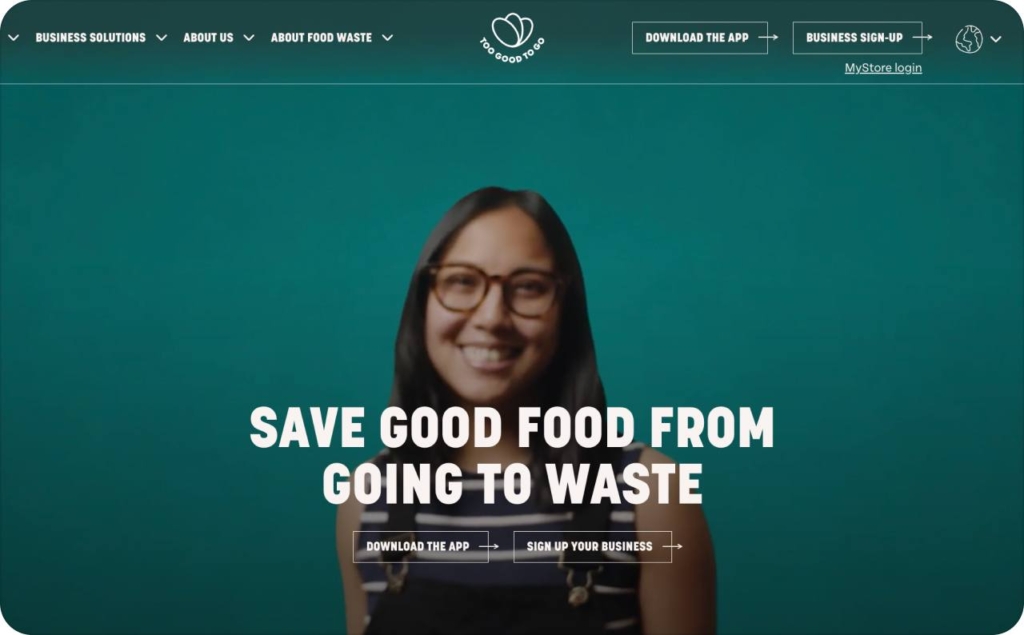
Photo source: Too Good To Go
15. ClassTag school-supply reminder ad
This tactic uses contextual mobile advertising targeting aligned with seasonal and behavioral data. ClassTag identifies parents using education or parenting apps before the school year starts and delivers gentle reminders to stock up on essentials from partnered retailers.
Why it works
- Anticipates needs tied to predictable yearly patterns
- Feels like support, not sales, by framing the ad as a helpful nudge
- Strengthens partnerships between digital platforms and local retailers
- Converts planning intent into early, higher-value purchases
How to use it in your advertising: Imagine a parent checking a homework app in late August. A short message appears: “Ready for back-to-school? Find supplies nearby.” Use date-based targeting combined with app context to reach audiences before key milestones. Keep creative soft, friendly, and time-relevant, more like advice from a teacher than a brand push.
16. Ritual supplement reorder reminder ad
This tactic uses first-party mobile advertising targeting driven by subscription cycle data. Ritual tracks when a customer’s vitamins are running low and sends a mobile push or social reminder that makes reordering feel timely and personalized rather than automated.
Why it works
- Anticipates user needs before products run out
- Reinforces consistency and trust through predictable timing
- Feels like a service update instead of a sales prompt
- Boosts retention and repeat order rates with minimal ad spend
How to use it in your advertising: Picture a user whose 30-day supply is nearly finished. They see a short, calm message: “Running low? Your next month’s essentials are ready.” Use order data and delivery timing to automate smart reminders. Keep the tone reassuring and proactive, focusing on care and continuity, so the ad reads like help, not persuasion.
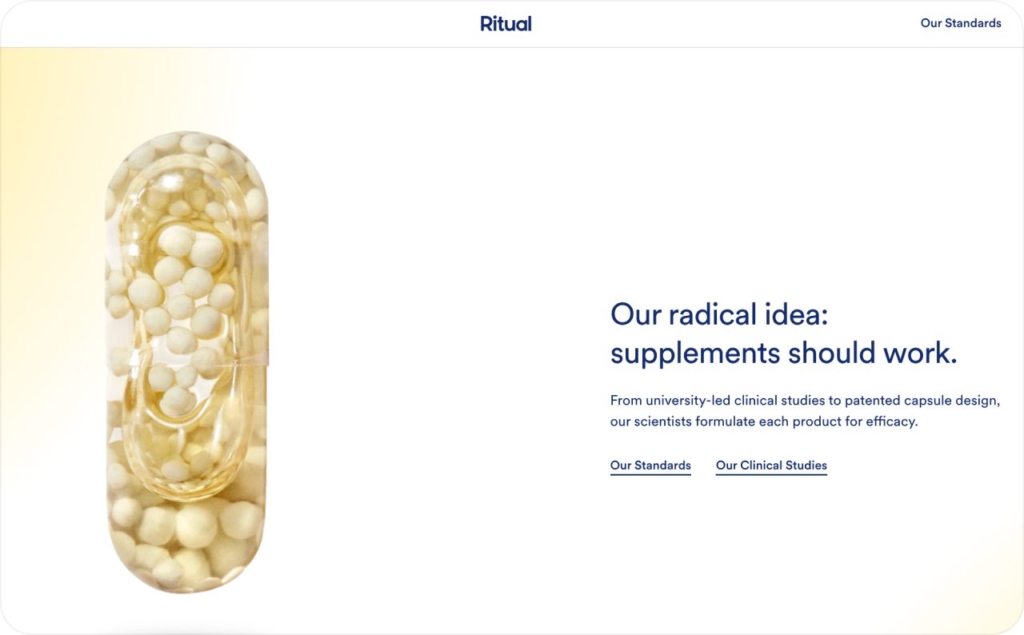
Photo source: Ritual
17. Bumble location-triggered conversation starter ad
This tactic uses mobile geo targeting advertising linked to nearby events and high-density social areas. Bumble identifies active users attending concerts, festivals, or local hangouts and serves short prompts encouraging them to connect or start a chat in the moment.
Why it works
- Turns shared location into instant common ground
- Encourages real-time engagement instead of passive browsing
- Taps into social energy when users are most open to connection
- Increases app usage and message starts during peak local activity
How to use it in your advertising: Imagine someone opening Bumble while waiting in line at a music festival. A message appears: “Meet other fans here tonight.” Use live event data

Photo source: Bumble
18. Everand genre-based audiobook suggestion ad
This tactic uses interest-driven mobile advertising targeting fueled by listening habits. Everand studies which genres users finish most often, like mystery, romance, or self-development, and serves ads or notifications suggesting the next title in that same emotional lane.
Why it works
- Builds continuity and comfort by aligning with proven preferences
- Turns user data into helpful curation, not aggressive upselling
- Keeps engagement high by focusing on what listeners already enjoy
- Converts sampling behavior into repeat listens and paid plans
How to use it in your advertising: Picture a listener who just finished a thriller audiobook. That evening, a quiet prompt appears: “Loved suspense? Here’s your next midnight mystery.” Use completion data and genre tags to drive recommendations automatically. Keep the tone friendly and specific, with simple visuals that echo the mood of the listener’s favorite stories.
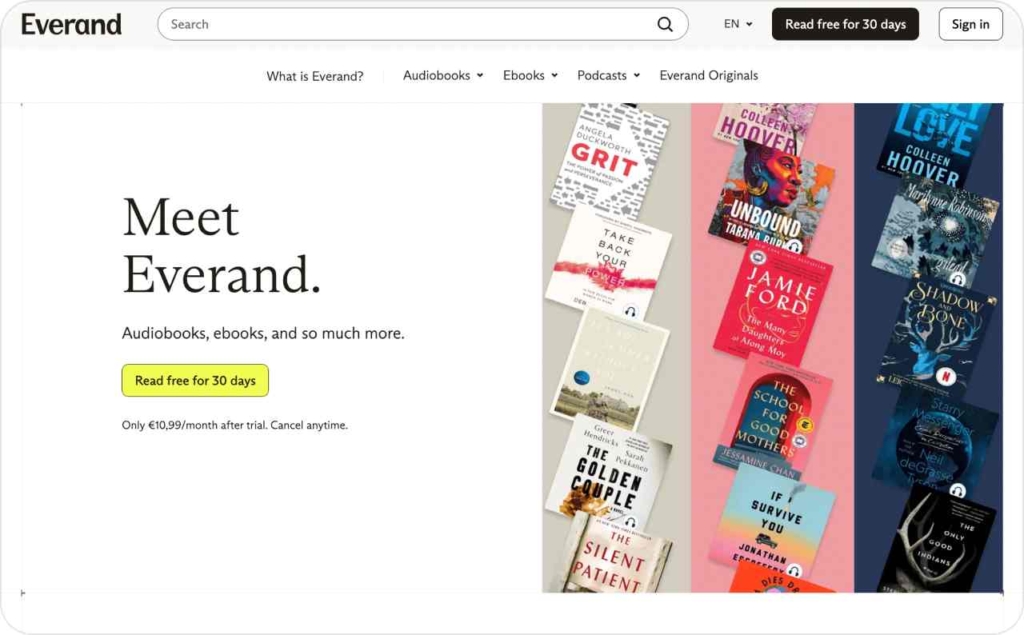
Photo source: Everand
19. Fabletics post-workout apparel ad
This tactic uses behavioral mobile advertising targeting based on fitness app integrations and motion data. Fabletics reaches users shortly after a completed workout, promoting breathable, high-performance apparel that matches the intensity and duration of their recent activity.
Why it works
- Connects physical effort to immediate product relevance
- Turns post-activity satisfaction into a purchase-ready mindset
- Reinforces brand identity as part of an active lifestyle
- Boosts conversion rates by catching users during natural endorphin highs
How to use it in your advertising: Imagine a user finishing a 5K run logged through their fitness tracker. Ten minutes later, an ad appears: “You earned this — gear built for your next run.” Sync motion data or fitness app APIs to target recovery windows. Keep creative clean, motivational, and tactile, more “you did it” than “buy now.” Focus on momentum, not pressure.
20. Calzedonia proximity-based retail promo ad
This tactic uses geo targeted mobile advertising around shopping centers and pedestrian zones. Calzedonia detects users within walking distance of one of its boutiques and serves them time-sensitive ads promoting new arrivals or in-store bundle offers.
Why it works
- Reaches users in a natural shopping mindset
- Translates nearby presence into real-world store visits
- Keeps creative simple and visual, reinforcing brand aesthetics
- Converts casual interest into measurable foot traffic
How to use it in your advertising: Picture someone scrolling through Instagram while passing a shopping street. A Calzedonia ad appears: “New fall collection just a minute away.” Use narrow radius targeting and short time windows to reach users in motion. Keep visuals consistent with store displays and include a quick “find us nearby” CTA that blends guidance with discovery.
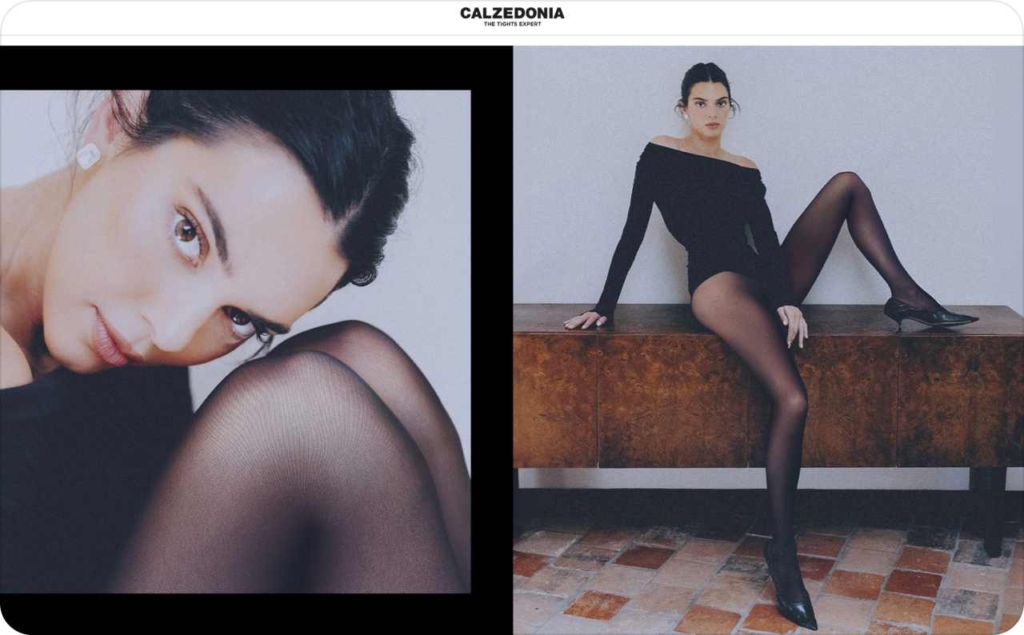
Photo source: Calzedonia
Build your campaign with Zeely AI ad generator
Zeely AI makes AI ad creation fast, simple, and built for performance — from static visuals to full Meta campaigns. Create static ads in minutes, not hours. No design skills needed, just add your product info and download ready-to-use PNG creatives.
- Higher conversion rate. AI analyzes performance data and generates optimized ads designed to drive clicks, conversions, and sales
- Proven templates. Access 100+ tested ad templates, updated regularly. Each includes AI-written copy, smart product data integration, and customization for your brand
- Easy content creation. Generate titles, descriptions, and CTAs instantly. Choose from: template-based ads ready for Facebook publishing and fully editable ads like instant ad maker or brand remix for total creative freedom
- Simple editing. Tweak copy, crop images, enhance visuals, or remove backgrounds using AI tools — all in one clean, intuitive interface
- Brand customization. Change colors and styles in select templates to match your identity effortlessly
- Scalable output. Generate up to 20 static ads per product, ideal for A/B testing and creative variety
- Seamless Meta integration. Connect Facebook and Instagram for direct posting and automated ad launches
- AI video maker. Produce professional video ads in under 7 minutes, complete with 500+ realistic avatars, strong hooks, and optimized scripts for TikTok, Meta, YouTube, and more
- Smarter campaigns. Zeely’s AI launches, tests, and scales campaigns automatically, helping you spend smarter, convert faster, and grow with less effort
Turn your ideas into scroll-stopping ads, create your first AI-powered campaign with Zeely today.
Also recommended
